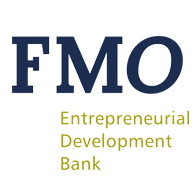

This article was written by Maria Fernández-Daza de Flórez, a colleague within our Legal department. Her views expressed in this piece do not necessarily reflect those of FMO.

In a world where global capital exceeds $450 trillion, the persistent $4 trillion financing gap for sustainable development is not a matter of scarcity— but a matter of inadequate deployment of funds. Capital is there, the challenge is directing it to where it’s most needed: fragile markets, early-stage ventures, women and youth entrepreneurs, and high-impact sectors like agriculture, energy, and infrastructure.
This was the central theme in Seville this week. Perhaps the 45°C heat served as a reminder—a decade after Addis Ababa—that action is imperative. The question is no longer if we can mobilize capital, but how. The focus was sharp:
· What barriers continue to block capital flows?
· What scalable solutions must market actors implement and what roles must each play?
Despite the appetite for impactful returns, persistent obstacles—weak legal and regulatory frameworks, lack of standardization, poor data, limited transparency, fragmented ecosystems, and aversion to patient capital—continue to create unpredictable, high-risk markets. These conditions especially affect low-income and frontier markets, where the failure to align local and international institutions hinders bankability and prevents promising ventures from scaling.
If we focus on SMEs, as Michael Jongeneel (CEO of FMO), summarized during the panel co-hosted by FMO and IDH (Revolutionizing Upstream Finance: Empowering SMEs through Accelerating Joint Market Creation, moderated by Andrew Shaw): the path forward lies in blended finance, bankable opportunities, and fit-for-purpose regulatory frameworks.
Blended finance is proving to be a powerful tool to de-risk investments and mobilize private capital. Institutions like the EU, MIGA, GCF, multilaterals, and DFIs are deploying guarantees and concessional capital to support equity and debt in high-risk environments. Platforms are being streamlined to improve efficiency and standardization.
Regulatory frameworks changes are not just about creating demand—they’re about building investable markets. Governments like Nigeria, Oman, and Pakistan are leading bold reforms: removing unsustainable subsidies, stabilizing macroeconomic conditions, and opening key sectors to private investment. These are not just policy tweaks—they are market building moves.
SMEs are the engines of growth, yet they still seem to be trapped in the so-called “missing middle.” Building local capacity is essential to generate investable projects. That means empowering local actors to build pipelines through mentorship, financial training, and governance support.
So what would be the recipe to fill in in gap? The secret formula seems to be found in “second mobilization” and data analysis.
The main takeaway appears to be the importance of having local partners in the field and to rely on existing data with sufficient granularity to understand the real risks versus the “perceived risk”.
The remark that stayed with me was: "Do not design market-building tools from capital cities without understanding local realities." (Amma Lartey, CEO IIGh)
Indeed, durable markets cannot be built without meaningful partnerships with local actors.
GSG Impact in the panel co-hosted with EDFI (Breaking the barriers: mobilizing private capital where it matters most.) presented the findings from its Report: a new lens on SME mobilization: how to maximize private capital flows to SMEs.
The report explains how Development Finance Institutions (DFIs), including bilateral DFIs, multilateral development banks (MDBs) and their intermediaries can unlock greater flows of private capital to SMEs in EMDEs emphasizing the importance of relying on local financial institutions, data-driven strategies, and targeted incentives.
· Track and understand secondary mobilization: systematic collection and data analysis on how the above entity´s capital catalyzes additional private investment—especially through intermediaries. Shared definitions and metrics are essential to design better strategies and ensure accountability.
· Incentivize intermediaries to mobilize more capital: mobilization incentives should be embedded into financing structures—such as performance-based bonuses, co-investment schemes, or concessional capital that rewards mobilization of private investors.
· Beyond individual transactions, investment must be made into ecosystem-building: technical assistance, regulatory engagement, and market infrastructure that enables intermediaries to scale SME finance. This includes fostering local capital markets, improving credit data systems, and supporting blended finance platforms.
These recommendations are grounded in real-world case studies and are designed to help DFIs move from ad-hoc mobilization to a more strategic, scalable approach.
Regarding data analysis, emphasis was made on how shared data—particularly through platforms like The Global Emerging Markets Group (GEM) Risk Database—enables more informed risk assessments and investment decisions by providing access to decades of historical data. Originally developed as an internal tool, GEM has evolved into a public good, offering 30 years of data on private and public lending and 40 years on sovereign and sovereign-guaranteed lending.
Curiously enough, the data reveals that credit risks in emerging markets are significantly lower than commonly perceived, with MDB/DFI portfolios showing strong credit quality and diversification benefits across regions and income levels. For example, borrowers in low-income countries show an average default rate of just 6.6%, compared to the 28% implied by sovereign ratings, and recovery rates are highest in these regions.
The question now is whether greater granularity in the shared data is needed for a full assessment, and whether different market actors can provide such information—particularly in light of varying local regulatory frameworks.
In that sense, impact funds are uniquely positioned to act as nexus within the investment ecosystems, they should not just be considered as conduits for DFI/MDBs' capital as they bring along broader private capital flows and may hold a bigger role, including:
· Tracking and demonstrating mobilization by sharing data on how their investments crowd in private capital.
· Structuring blended finance vehicles with performance-based incentives for local banks and funds.
· Deploying concessional capital to de-risk early-stage or underserved sectors.
· Anchoring local intermediaries and helping them scale.
· Investing in ecosystem infrastructure—from credit scoring platforms to climate data tools.
· Supporting technical assistance and engaging in policy dialogue to advocate for enabling reforms.
In essence, impact funds are agile and risk-tolerant (local) partners that can help bridge the gap between local market realities and global investment flows—especially in sectors and geographies where traditional capital remains hesitant.
As a lawyer, there was one big incognita that I have not managed to figure out during FFD4: why were there so few legal professionals at the table—especially when the discussions centered on mobilizing capital at scale, structuring blended finance vehicles, and building enabling ecosystems, including legal frameworks?
Is it because lawyers are often not seen as strategic partners? Are we relegated to mid-office functions, with limited visibility and under-celebrated legal innovation? Or is it the perception that legal professionals slow down innovation, rather than enable it?
But shouldn’t lawyers play a much more prominent role at this strategic stage?
When we’re talking about blending concessional and commercial capital across jurisdictions, within complex regulatory environments, legal design should not be a side note but it should be essential. An agile counsel can:
If we want scalable, replicable, and resilient solutions, we need legal minds at the table that address the legal risks that this structure enable, not just to review contracts, but to help shape the basis of the system itself.
This is not a matter of hope, as Nadia Calviño (President of EIB), reminded us—it’s a matter of determination. The same determination that lit up the flamenco show co-hosted by COFIDES and the Spanish NAB at Espacio RES on Tuesday night.
Mobilizing capital effectively means more than financial engineering; it requires trust, aligned systems, and local intelligence. From “secondary mobilization” to legal design, the path forward demands agile minds—financial and legal—across governments, DFIs, and local institutions. The momentum is now. If we get this right, we don’t just close the financing gap, we unlock a future of inclusive and sustainable growth.